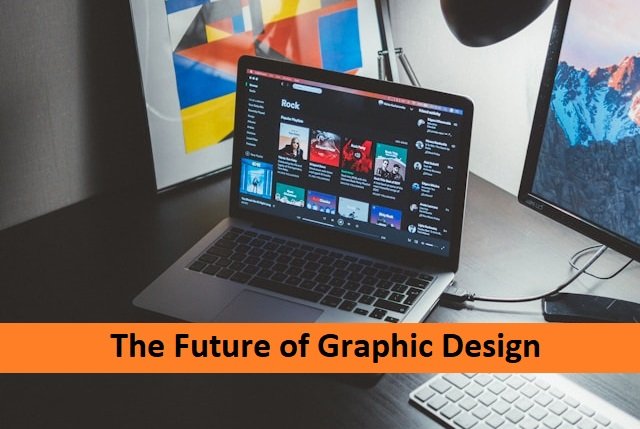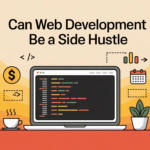
The world of graphic design is undergoing a significant transformation, driven by rapid advancements in technology. What was once a field dominated by manual skills and artistic intuition is now evolving into a domain where artificial intelligence (AI) plays a pivotal role. Among the most groundbreaking developments is the rise of AI image generators, tools that are redefining how we approach creativity and design. As these technologies become increasingly sophisticated, they are poised to lead the way into a new era of graphic design, one where the boundaries between human and machine creativity blur.
The Evolution of Graphic Design

Graphic design has always been a field in flux, constantly adapting to new tools and techniques. In the early days, design was a manual craft, with artists painstakingly creating layouts by hand. The advent of digital tools in the late 20th century marked a significant shift, allowing designers to work more efficiently and experiment with new styles and formats. The introduction of software like Adobe Photoshop and Illustrator revolutionized the industry, making complex designs more accessible and expanding the possibilities of what could be achieved.
As digital tools became the norm, the industry began to see the early signs of AI integration. Initially, AI was used for relatively simple tasks, such as automating repetitive actions or enhancing photo editing. However, as AI technologies have advanced, so too has their application in graphic design. Today, AI is not just a tool for automation but a creative partner capable of generating unique and compelling visual content.
Understanding AI Image Generators

AI image generators are at the forefront of this technological revolution. These tools leverage advanced algorithms and machine learning models, such as Generative Adversarial Networks (GANs) and Diffusion Models, to create images that can range from photorealistic to abstract. Unlike traditional design tools, which require manual input for every detail, AI image generators can produce complex images with minimal human intervention. By analyzing vast datasets of existing images, these models learn patterns and styles, enabling them to generate new images that adhere to specific design parameters or artistic directions.
Some of the most well-known AI image generators in the market today include tools like DALL-E, MidJourney, and Stable Diffusion. These platforms have gained widespread attention for their ability to produce high-quality images based on textual descriptions, opening up new possibilities for designers who can now generate visual content by simply describing their ideas in words.
How AI Image Generators are Transforming the Design Process

The impact of AI image generators on the design process is profound. One of the most significant advantages is the automation of repetitive tasks. Designers can now delegate time-consuming activities, such as creating variations of a design or fine-tuning color schemes, to AI, allowing them to focus on more strategic and creative aspects of their work. This not only increases efficiency but also frees up mental space for designers to explore new ideas and experiment with different approaches.
AI image generators also enhance creativity by providing designers with a virtually limitless source of inspiration. These tools can generate a wide array of design options based on a few simple inputs, enabling designers to quickly iterate on ideas and explore possibilities they might not have considered otherwise. This capability is particularly valuable in the early stages of the design process, where brainstorming and conceptualization are key.
Moreover, AI accelerates the design workflow. What once took days or weeks to create can now be done in a matter of hours, or even minutes, with AI tools. This speed is especially beneficial in industries where time-to-market is critical, such as advertising or content creation. Companies like Adobe and Canva have already begun integrating AI-powered features into their platforms, allowing users to harness the power of AI without needing to leave their familiar design environments.
Impact on Graphic Designers

The rise of AI in graphic design naturally raises questions about the future role of human designers. While some fear that AI could render their skills obsolete, the reality is more nuanced. Rather than replacing designers, AI is redefining their role. In the AI-driven future, graphic designers will need to shift from being solely creators to becoming curators and directors of creative processes.
To thrive in this new landscape, designers must acquire new skills. Understanding how AI tools work, and how to effectively integrate them into the design process, will be crucial. This may involve learning basic programming skills, gaining familiarity with machine learning concepts, or simply developing an intuitive sense of how to guide AI tools to achieve the desired outcomes. The ability to work collaboratively with AI, rather than view it as a competitor, will be a key differentiator for designers in the coming years.
Despite the challenges, the rise of AI also presents new opportunities. Designers can now take on more complex and large-scale projects, thanks to the efficiency and creative potential unlocked by AI tools. Additionally, the democratization of design through AI-powered platforms allows individuals with limited traditional design skills to create professional-quality visuals, opening up new avenues for creative expression and innovation.
Ethical Considerations

As with any disruptive technology, the integration of AI in graphic design comes with its own set of ethical considerations. One of the most contentious debates revolves around the distinction between AI-generated and human-generated art. Purists argue that true art must be the product of human creativity, while others contend that AI-generated art can be equally valuable and meaningful. This debate raises questions about authorship, authenticity, and the role of the artist in the age of AI.
Intellectual property concerns are another critical issue. AI models are trained on vast datasets of existing images, many of which are copyrighted. This raises questions about the ownership of AI-generated content and whether creators of the original works used in training should be compensated. As AI-generated content becomes more prevalent, legal frameworks will need to evolve to address these challenges and protect the rights of all stakeholders.
Bias in AI-generated designs is also a significant concern. Since AI models learn from existing data, they can inadvertently perpetuate existing biases or create designs that reflect narrow perspectives. It is essential for developers and designers to be aware of these biases and take steps to mitigate them, ensuring that AI-generated content is inclusive and representative of diverse voices and cultures.
The Future Outlook

Looking ahead, the role of AI in graphic design is likely to continue expanding. In the next decade, we can expect AI to become an even more integral part of the design process, with increasingly sophisticated tools that can autonomously create entire design projects from start to finish. However, rather than eliminating the need for human designers, AI will likely foster new forms of collaboration between humans and machines, with each bringing unique strengths to the table.
Emerging trends in AI and graphic design include the development of more personalized and context-aware design tools, as well as the integration of AI with other technologies such as augmented reality (AR) and virtual reality (VR). These advancements will open up new possibilities for immersive and interactive design experiences, further blurring the lines between digital and physical spaces.
FAQs:
1. What are AI image generators?
AI image generators are tools that use artificial intelligence, particularly machine learning models like Generative Adversarial Networks (GANs) and Diffusion Models, to create images based on specific inputs, such as textual descriptions. These tools can produce a wide range of images, from photorealistic scenes to abstract designs.
2. How are AI image generators changing the graphic design industry?
AI image generators are transforming the graphic design industry by automating repetitive tasks, enhancing creativity, and speeding up the design process. They allow designers to quickly generate and iterate on ideas, making the creative process more efficient and opening up new possibilities for design innovation.
3. Will AI image generators replace graphic designers?
No, AI image generators are unlikely to replace graphic designers. Instead, they are redefining the role of designers, shifting their focus from manual creation to curating and directing AI-generated content. Designers will need to acquire new skills to effectively integrate AI into their workflows, but human creativity and intuition will remain essential.
4. What skills will graphic designers need in the age of AI?
In the age of AI, graphic designers will need to develop a strong understanding of how AI tools work, including basic programming and machine learning concepts. Additionally, they will need to hone their ability to guide and collaborate with AI tools to achieve desired outcomes, while also maintaining their creative vision and expertise in design principles.
5. Are there ethical concerns associated with AI-generated designs?
Yes, there are several ethical concerns related to AI-generated designs. These include debates over the authenticity and authorship of AI-generated art, intellectual property issues arising from the use of copyrighted materials in AI training datasets, and the potential for biases in AI-generated content that could perpetuate harmful stereotypes or exclude certain perspectives.
6. How can AI-generated designs impact intellectual property rights?
AI-generated designs can complicate intellectual property rights because the AI models are often trained on large datasets of existing images, many of which may be copyrighted. This raises questions about who owns the rights to AI-generated content and whether creators of the original works used in training should be compensated.
7. What are the potential benefits of using AI image generators in graphic design?
The benefits of using AI image generators in graphic design include increased efficiency, the ability to quickly generate multiple design variations, enhanced creativity through AI-driven experimentation, and the democratization of design by making high-quality visual content accessible to non-designers.
8. How might AI image generators evolve in the future?
In the future, AI image generators are likely to become even more advanced, capable of autonomously creating entire design projects and producing personalized, context-aware designs. We may also see AI integrated with other emerging technologies like augmented reality (AR) and virtual reality (VR), leading to new forms of immersive and interactive design experiences.
9. Will AI-generated content look the same as human-created designs?
While AI-generated content can closely mimic human-created designs, it often has a distinctive style that reflects the patterns and data it was trained on. However, as AI tools become more sophisticated, the differences between AI-generated and human-created designs may become increasingly subtle, making it harder to distinguish between the two.
10. Can AI image generators help non-designers create professional-quality visuals?
Yes, AI image generators can help non-designers create professional-quality visuals by simplifying the design process and automating complex tasks. These tools lower the barrier to entry for creating high-quality designs, allowing individuals with limited traditional design skills to produce impressive visual content.
Conclusion
The future of graphic design is undoubtedly intertwined with the rise of AI image generators. These tools are not just changing how designs are created but also reshaping the role of the designer, opening up new possibilities for creativity and innovation. As we move forward, it is crucial for designers to embrace AI as a powerful tool that can enhance their work, rather than fear it as a threat to their profession. By doing so, they can remain at the forefront of a rapidly evolving industry, leading the way into a future where human and machine creativity coexist and thrive.




